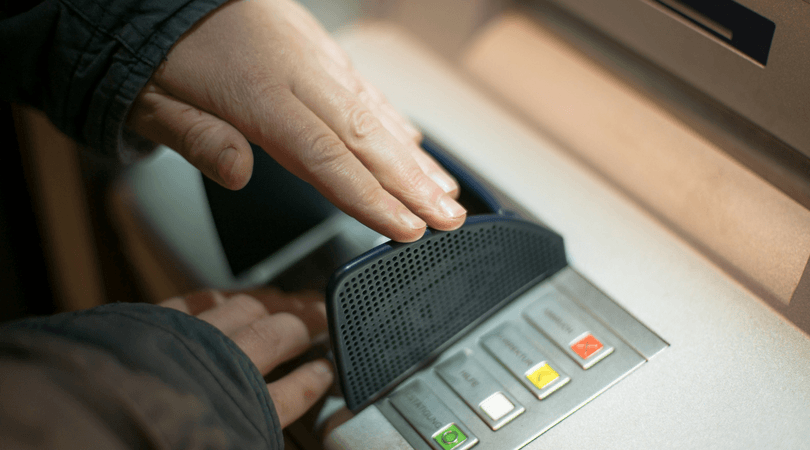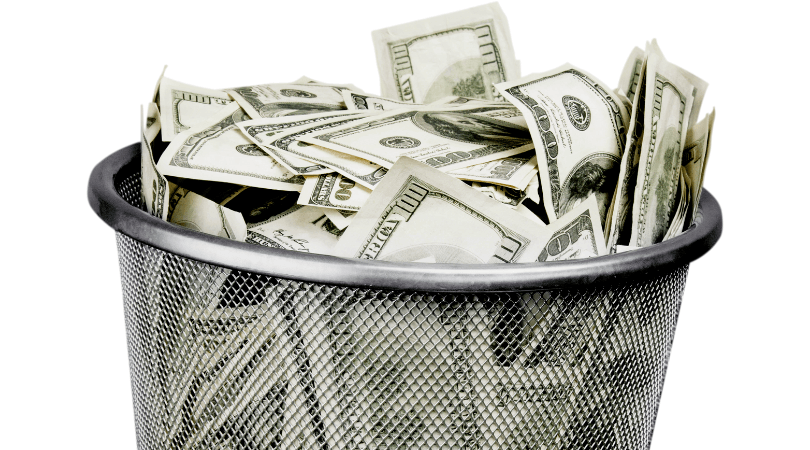If you’re like most people, you’re paying higher fees with your prepaid card than you have to. Here’s how to avoid some of the most common fees that prepaid card users pay.
Our recent survey of prepaid card users suggested some good news and some bad news for prepaid card users. The good news is that people are pretty happy with their prepaid cards. In fact, sixty percent of millennials surveyed said they found their prepaid card more useful than expected.
The bad news? According to that same survey, many prepaid card users (at least in that age group) are spending more on fees than they have to. And you might just be one of them.
But you don’t have to be. There are some pretty easy ways to save on prepaid card fees by making some tweaks on how you use your card and how you pick your next card.
Save on ATM Fees
 Most prepaid cards charge ATM fees. Even so, more than 72% of prepaid card users are using ATMs to get cash from their card, and the majority of those are hitting the ATM more than 3 times per month. Fees can be up to $2.50 per withdrawal plus the ATM owner’s charge.
Most prepaid cards charge ATM fees. Even so, more than 72% of prepaid card users are using ATMs to get cash from their card, and the majority of those are hitting the ATM more than 3 times per month. Fees can be up to $2.50 per withdrawal plus the ATM owner’s charge.
At the same time, ATM fees are pretty easy to avoid. You can get cash back when making a debit purchase at the register with most prepaid cards. Or you can save money by reducing the number of trips to the ATM.
If your cash needs just don’t allow bypassing the ATM, then maybe it’s time to check out a prepaid card that offers free ATM withdrawals.
Choose the Right Fee Structure
Nearly all prepaid card users are using their cards for purchases–98% according to our latest survey. It’s not surprising. One of the biggest advantages of a prepaid card is that they carry the Mastercard or Visa brands and can be used about anywhere.
So, if you’re like most people, you use your prepaid card for purchases. But you should consider the number of purchases to determine your cheapest fee options.
Prepaid cards generally charge either a monthly fee or a fee for purchases. Almost no cards charge both. The cards that charge for purchases typically provide a monthly fee option.
For most people, the cheaper option is a card with a monthly fee. The vast majority make 6 or more purchases or month. For cards that charge purchase fees, they generally run $1 for credit purchases and $2 for debit purchases. At 6 or more purchases, the purchase fees are probably going to be higher than paying a fixed monthly fee.
But for the nearly 30% that make 5 or fewer purchases per month, the better option may well be a card that charges a purchase fee.
It’s easy to check your prepaid card activity to find out which group you’re in. You can sign into your prepaid card’s web portal to review your purchase history for a few months. If you’re using your card for few purchases and paying a monthly fee, see if your current prepaid card offers a fee plan that charges for purchases instead.
But if you’re in the majority–making 6 or more purchases per month–a monthly fee plan will be the better choice.
Skip Cash Loads
 Perhaps the most surprising result from our survey is that prepaid card users are frequently loading cash to their prepaid cards, even if they have checking accounts.
Perhaps the most surprising result from our survey is that prepaid card users are frequently loading cash to their prepaid cards, even if they have checking accounts.
Cash loads can get expensive. While most prepaid cards don’t charge a fee to reload your prepaid card with cash, the agents that provide the service do. Those fees range from $2.00 to $5.95 for each cash load.
Bypassing this fee is easy if you have a checking account. You can deposit the cash to your checking account and then transfer the money from checking to your prepaid card. The bank transfer is free for almost all prepaid cards.
If you don’t have a checking account, there are still options to minimize cash loads. Direct deposit of your paycheck is always a good start. Direct deposit is also free with nearly all cards. With some cards, it can even reduce or eliminate your monthly fee.
If you’re someone who regularly gets paid cash, however, eliminating cash loads may not be possible. In that case, consider getting a prepaid card through a bank near you like Access 360° Prepaid Card or PNC SmartAccess® Prepaid Visa® Card. Bank-issued prepaid cards have the advantage of offering free cash loads. The downside is that they often lack features of some of the big brand cards. And the only way to load cash requires a trip to the bank or ATM, so you’re limited to their service area.
Choose Wisely (and Online)
With many prepaid cards, you have a choice to buy the card online or in stores. But getting your prepaid card online has distinct advantages. First, it’s cheaper. Many prepaid cards charge no purchase or activation fee when you sign up online. But stores charge a purchase fee for those same cards. That can cost you $5.95 or more.
Second, comparing cards online allows you to review full terms and conditions. The information that you have available in stores is limited. While prepaid cards generally disclose a basic fee schedule on the packaging, that’s pretty much it. Reviewing prepaid card options online also allows you to compare all prepaid cards, not just the ones in stores.
That may be why more prepaid card users that purchase in stores are surprised by unexpected fees. According to our survey, 25% of those that bought in stores said their prepaid card’s fees were higher than expected, compared to only 14% of those that bought online.
Summary
With prepaid cards, how you use the card can have a big impact on fees. There are some easy adjustments that you can make, like minimizing ATM usage and cash loads, that can cut the fees, even with your current card.
But if you’re looking for cost-saving options that your card doesn’t have, then it may be time to get a better prepaid card.



